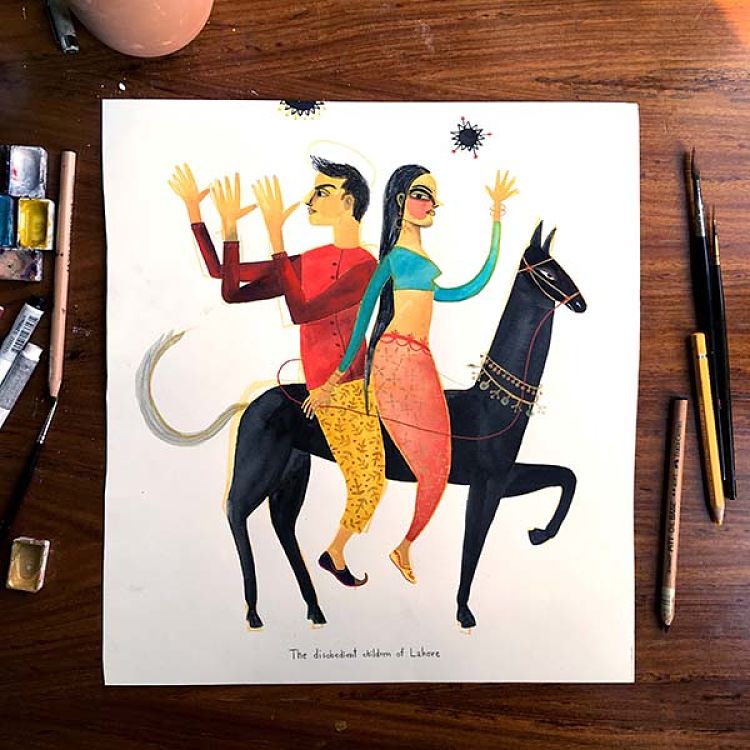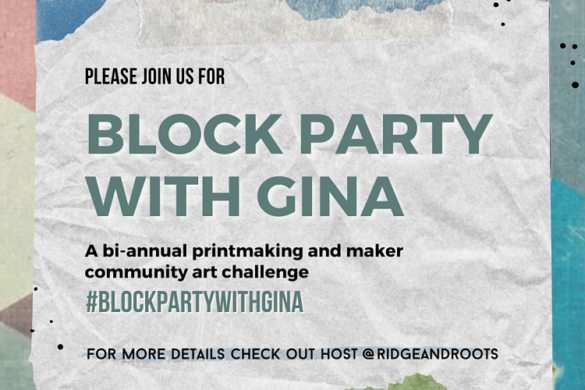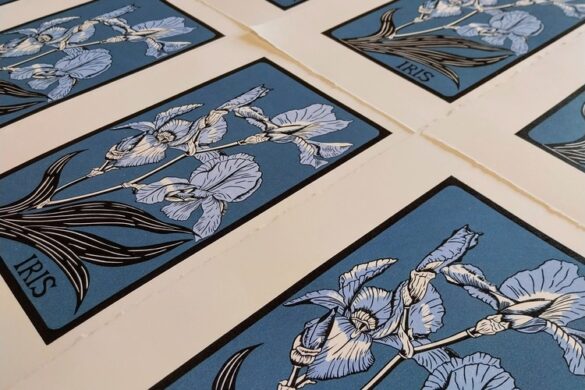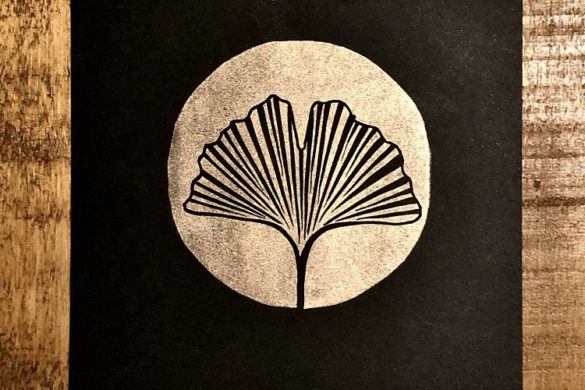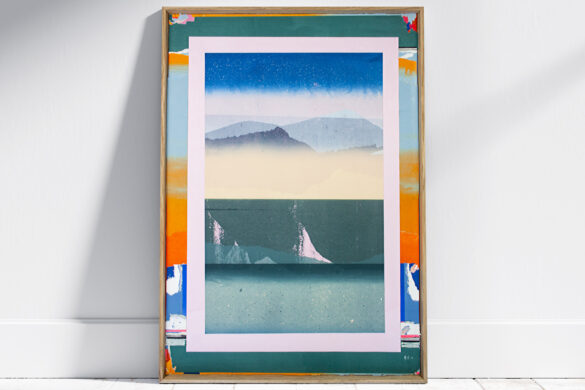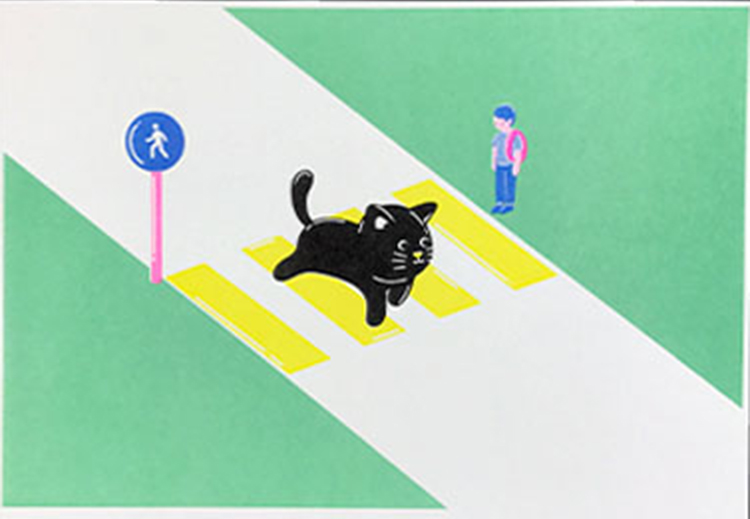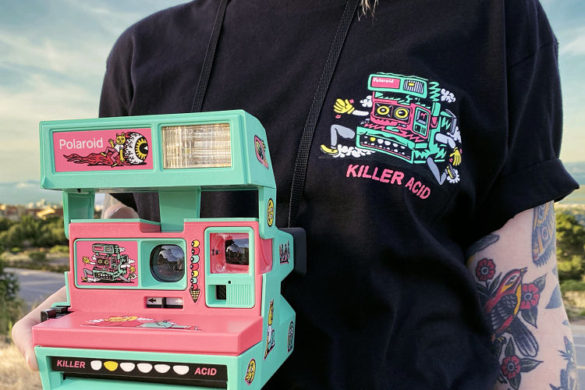Bianca Tschaikner is an artist, printmaker, and storyteller from Austria. Her illustrations are inspired by her travels around countries including India, Iran, and Italy, where she likes to completely immerse herself in the culture in search of stories, images, and atmospheres.
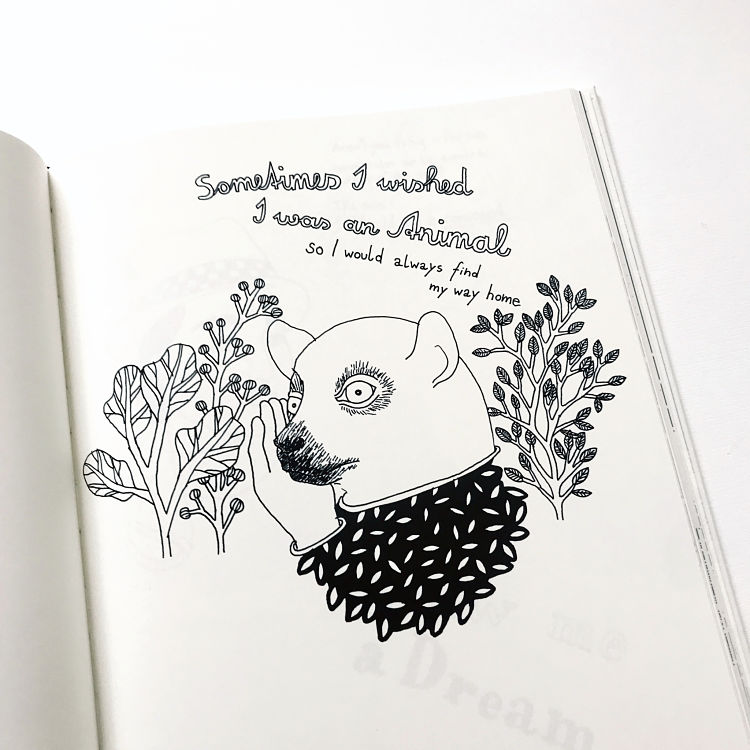 In her early twenties, Bianca was living in Morocco. One night, she was robbed on the Marrakech Express, and her sketchbook was stolen. This was the first sketchbook she had been working on with great dedication, and she was devastated by the loss. After returning from her unlucky trip, Bianca purchased a new sketchbook; a thick leather-bound Arabic calendar. This was the most suitable book she could find, and thus she decided to create a new sketchbook that would be even better than the lost one. “I became super ambitious to capture the weird and wild life in Tangier with everything going on in its shady coffee houses, bazaars, and gloomy bars, and soon found myself drawing constantly” describes the artist.
In her early twenties, Bianca was living in Morocco. One night, she was robbed on the Marrakech Express, and her sketchbook was stolen. This was the first sketchbook she had been working on with great dedication, and she was devastated by the loss. After returning from her unlucky trip, Bianca purchased a new sketchbook; a thick leather-bound Arabic calendar. This was the most suitable book she could find, and thus she decided to create a new sketchbook that would be even better than the lost one. “I became super ambitious to capture the weird and wild life in Tangier with everything going on in its shady coffee houses, bazaars, and gloomy bars, and soon found myself drawing constantly” describes the artist.
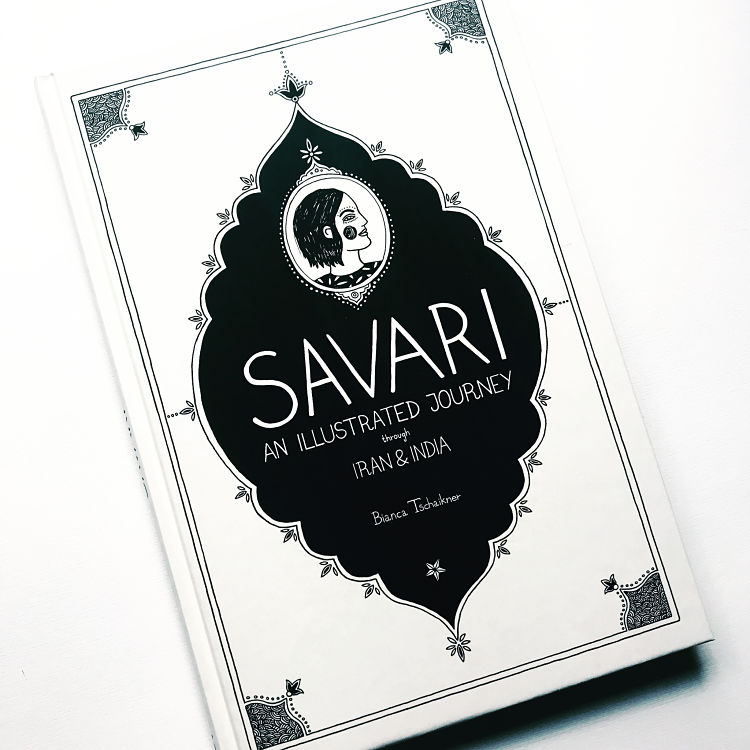 This was the catalyst for Bianca’s approach to her practice; exploring the world with her sketchbook. The first sketchbook she published was one from a journey through Iran and India. In Iran, Bianca felt really connected to the people, and related to their enormous love and understanding for art and poetry, which was something she hadn’t encountered before. After numerous suggestions to publish her story, she released Savari – an illustrated journey through Iran and India. Savari spans over four months and 24,500 kilometres, from surreal conversations in the tea houses of Shiraz and Esfahan, to printmaking in the jungle of Baroda, and partying in Bollywood. She explains; “It was a magical, dream-like journey which I documented and reflected for myself in my sketchbook, so Savari is certainly my most personal work“.
This was the catalyst for Bianca’s approach to her practice; exploring the world with her sketchbook. The first sketchbook she published was one from a journey through Iran and India. In Iran, Bianca felt really connected to the people, and related to their enormous love and understanding for art and poetry, which was something she hadn’t encountered before. After numerous suggestions to publish her story, she released Savari – an illustrated journey through Iran and India. Savari spans over four months and 24,500 kilometres, from surreal conversations in the tea houses of Shiraz and Esfahan, to printmaking in the jungle of Baroda, and partying in Bollywood. She explains; “It was a magical, dream-like journey which I documented and reflected for myself in my sketchbook, so Savari is certainly my most personal work“.
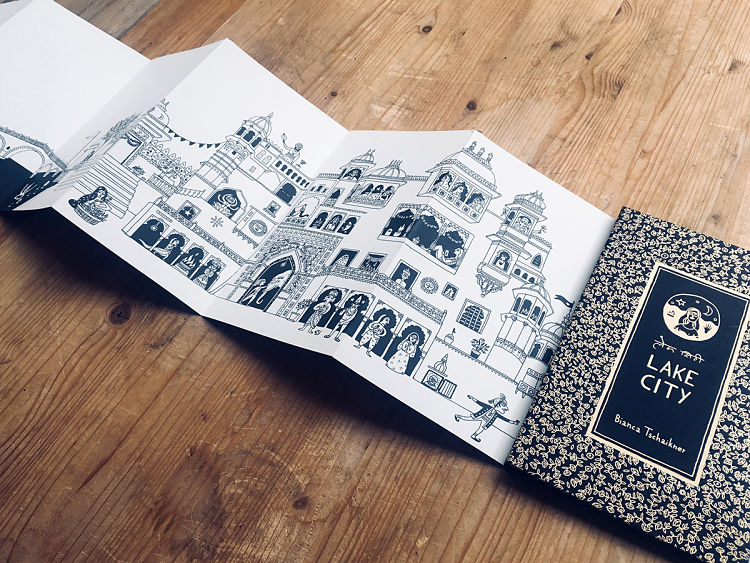 “I like to think of an artist less as a creator, but more as some kind of medium. I feel that the atmospheres and stories I perceive go through me onto the paper as a state of flow, and I enjoy drawing the most when I don’t even know myself what i’m going to draw, when I simply let myself lead by the pen. So I really enjoy working intuitively. For me observing my own images unfolding without following much of a plan is some kind of delicious entertainment for myself.”
“I like to think of an artist less as a creator, but more as some kind of medium. I feel that the atmospheres and stories I perceive go through me onto the paper as a state of flow, and I enjoy drawing the most when I don’t even know myself what i’m going to draw, when I simply let myself lead by the pen. So I really enjoy working intuitively. For me observing my own images unfolding without following much of a plan is some kind of delicious entertainment for myself.”
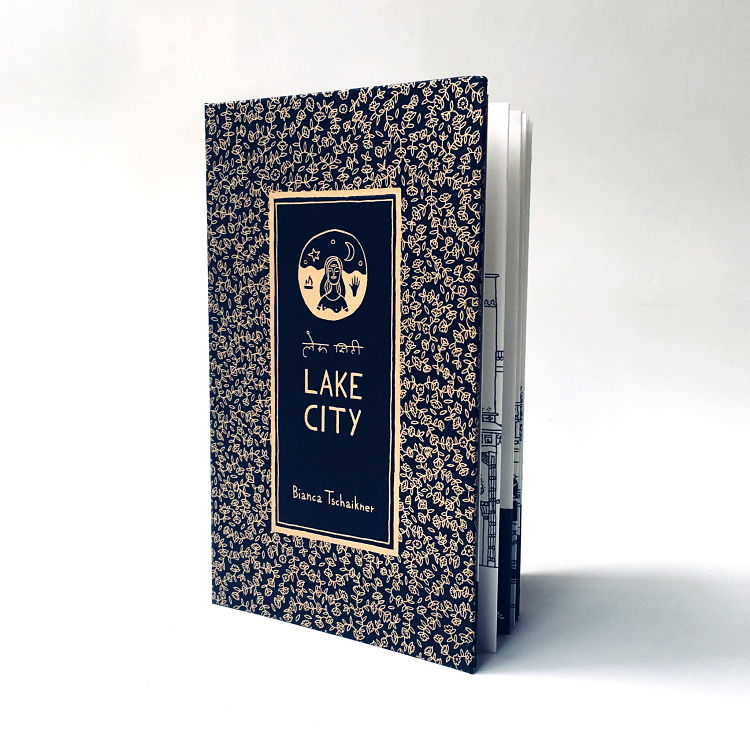 One of the most beautiful workplaces Bianca has experienced was in the city of Udaipur in Rajasthan, India. The city is full of swimming palaces, a labyrinth of lakes and bridges, and millions of intricate alleyways that lead to mysterious temples. Bianca stayed there for two months, and filled a three metre long leporello book with a part imaginary, part real, panorama of the wonderful and surreal city. Two years later, she printed Lake City in India as a beautiful handmade edition with a golden screen printed cover.
One of the most beautiful workplaces Bianca has experienced was in the city of Udaipur in Rajasthan, India. The city is full of swimming palaces, a labyrinth of lakes and bridges, and millions of intricate alleyways that lead to mysterious temples. Bianca stayed there for two months, and filled a three metre long leporello book with a part imaginary, part real, panorama of the wonderful and surreal city. Two years later, she printed Lake City in India as a beautiful handmade edition with a golden screen printed cover.
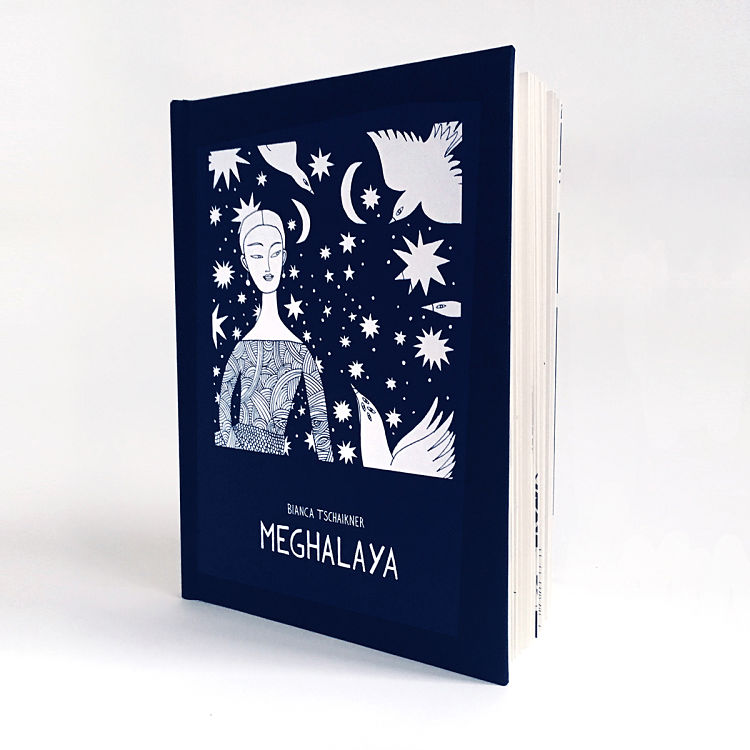
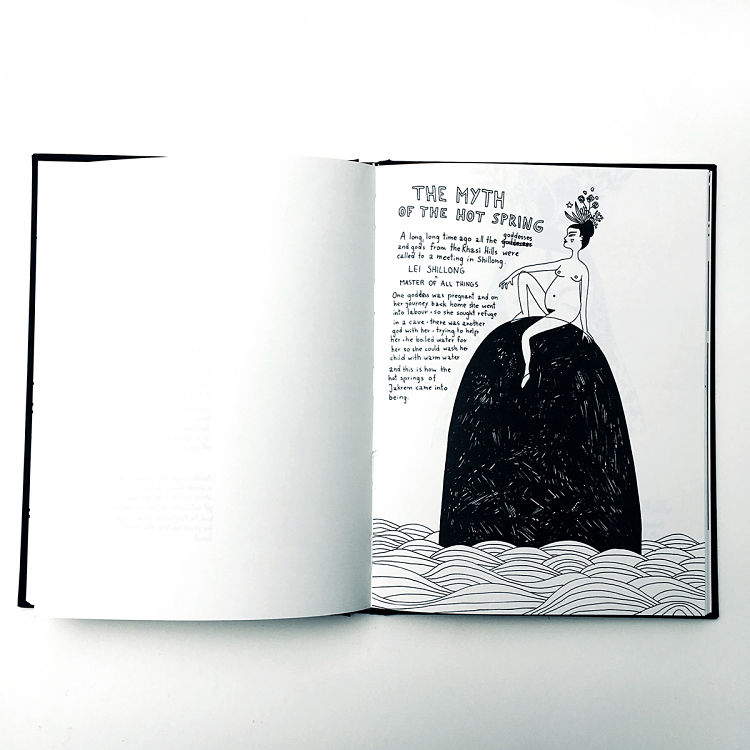 Together with Lake City, Bianca printed another sketchbook she made during a stay with the Khasi tribe. The Khasi live in Meghalaya, a remote area in Northeast India. The tribe are matrilineal and matrilocal, which means the family lineage is passed down from mother to daughter. “What I loved most about Meghalaya was its incredible richness of fascinating folktales… in my book there are stories about forests inhabited by spirits, living mountains fighting with each other, and weird everyday stories such as a whole village being arrested for having a tiger barbecue” states Bianca.
Together with Lake City, Bianca printed another sketchbook she made during a stay with the Khasi tribe. The Khasi live in Meghalaya, a remote area in Northeast India. The tribe are matrilineal and matrilocal, which means the family lineage is passed down from mother to daughter. “What I loved most about Meghalaya was its incredible richness of fascinating folktales… in my book there are stories about forests inhabited by spirits, living mountains fighting with each other, and weird everyday stories such as a whole village being arrested for having a tiger barbecue” states Bianca.
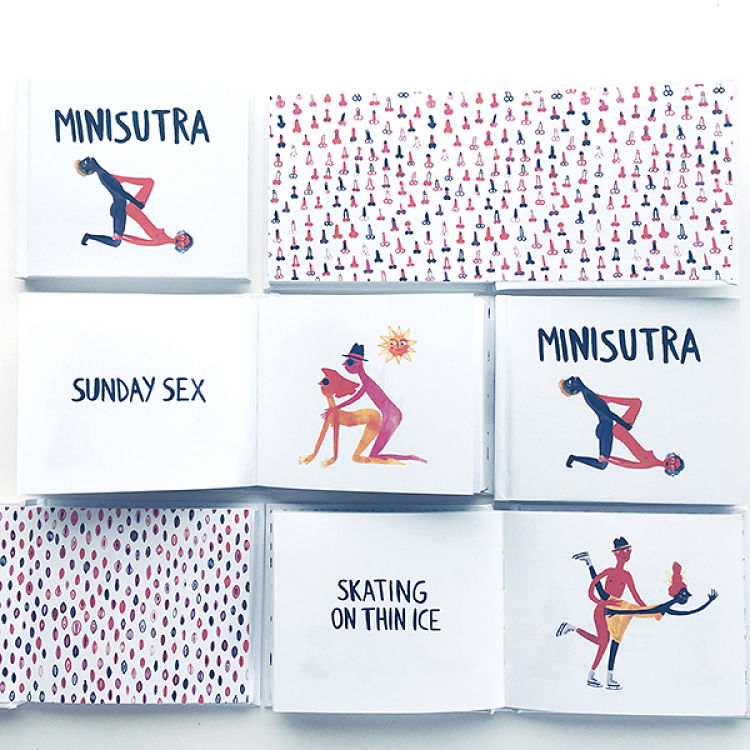 Bianca has recently launched Minisutra; a tiny book which takes a humorous twist on the ancient Kamasutra. The project was born from a Kamasutra advent calendar Bianca made on facebook some years ago. Every day she posted a funny (and often totally impracticable) sex position; “it was great fun, especially the comments I got from people“.
Bianca has recently launched Minisutra; a tiny book which takes a humorous twist on the ancient Kamasutra. The project was born from a Kamasutra advent calendar Bianca made on facebook some years ago. Every day she posted a funny (and often totally impracticable) sex position; “it was great fun, especially the comments I got from people“.
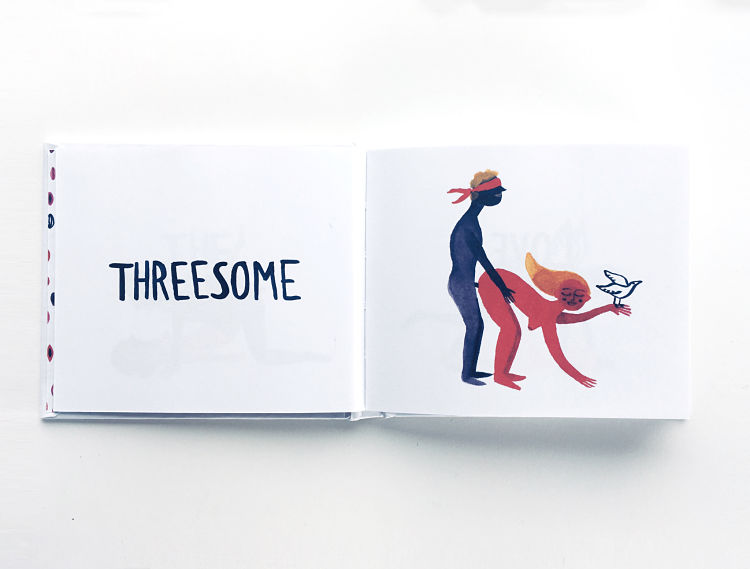 She has also started to work with papercut. Last year while in Valletta, Malta, she developed The City of Open Windows; where she created papercut posters inspired by stories she was told by Valletta’s inhabitants. Bianca discovered lots of dramatic stories of love and fun, including the tale of an artist so dedicated to his work that he would go to the port to paint during an air raid. “Valletta is a treasure case of history and of stories, very dense and very dark, and it was extremely interesting to work there” explains the artist.
She has also started to work with papercut. Last year while in Valletta, Malta, she developed The City of Open Windows; where she created papercut posters inspired by stories she was told by Valletta’s inhabitants. Bianca discovered lots of dramatic stories of love and fun, including the tale of an artist so dedicated to his work that he would go to the port to paint during an air raid. “Valletta is a treasure case of history and of stories, very dense and very dark, and it was extremely interesting to work there” explains the artist.
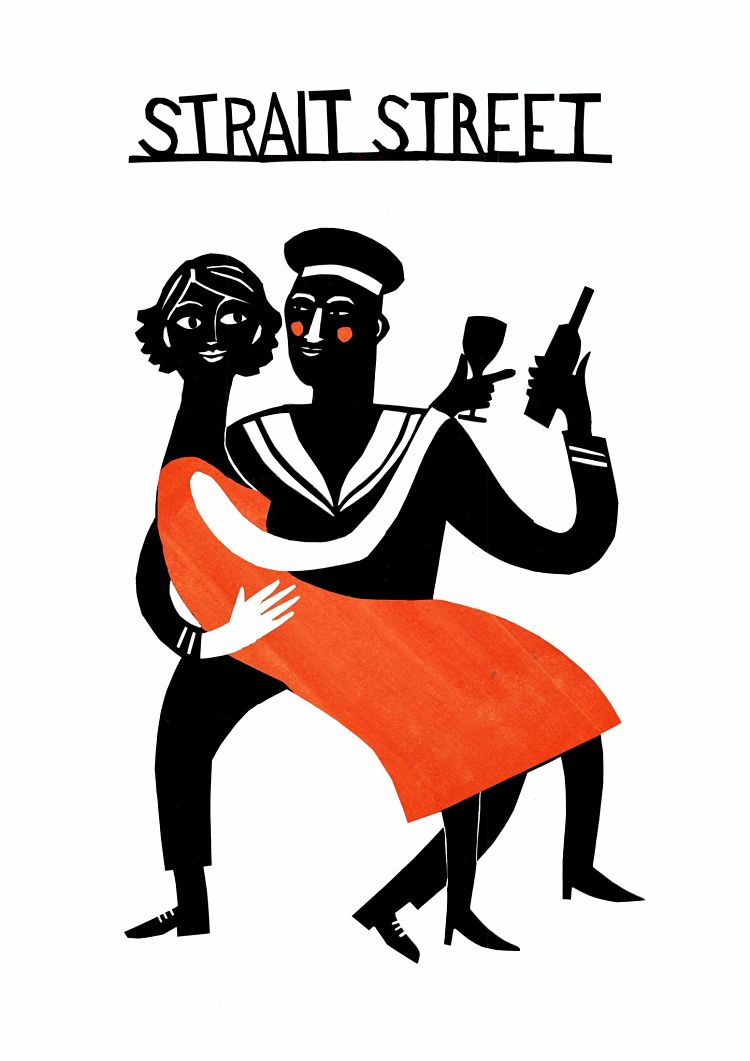
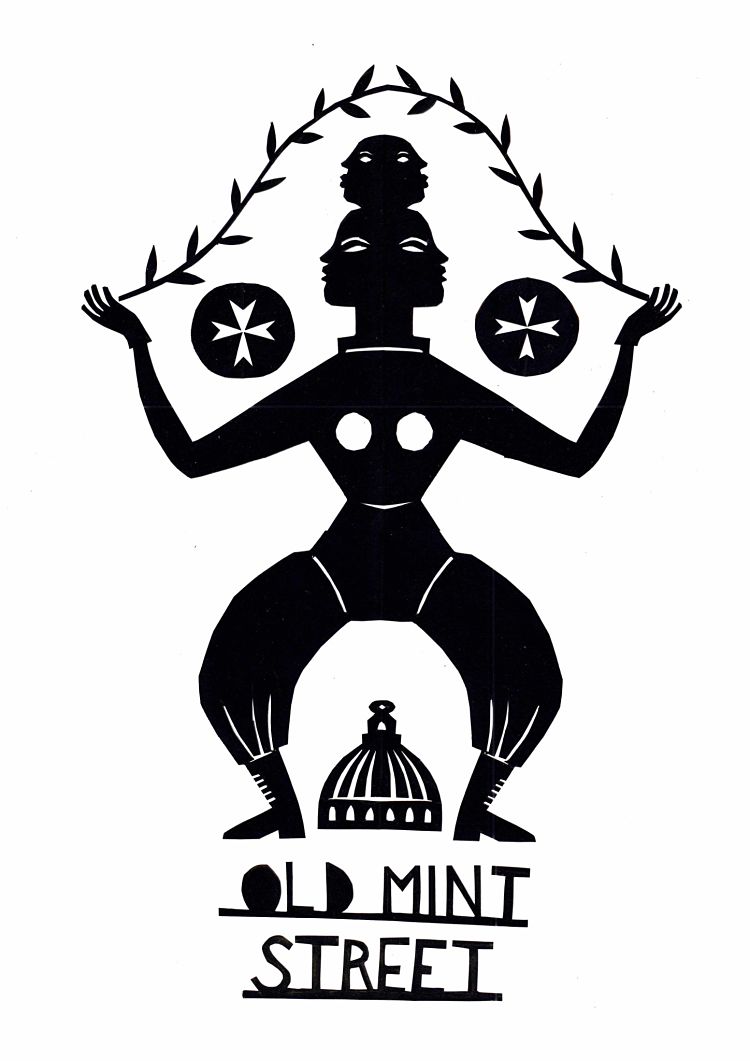 Ever since, Bianca has enjoyed exploring small villages, which she sees as “microcosms full of fascinating stories“. She describes; “There is a certain magic in villages, a magical web of stories you can’t find in that form in cities, where things are more disconnected“. Last summer Bianca found this magic once again in the small village of Castagno di Pitecchio in Tuscany, where she created her artist book A Cottage of Wind. In the publication, impressions of dreamy Tuscan nature collide with memories of the war she was told by villagers. To leave something for the villagers who had welcomed her into their community, Bianca also painted a mural of two hula hooping village girls, Greta and Emma, on one of the girls’ family home.
Ever since, Bianca has enjoyed exploring small villages, which she sees as “microcosms full of fascinating stories“. She describes; “There is a certain magic in villages, a magical web of stories you can’t find in that form in cities, where things are more disconnected“. Last summer Bianca found this magic once again in the small village of Castagno di Pitecchio in Tuscany, where she created her artist book A Cottage of Wind. In the publication, impressions of dreamy Tuscan nature collide with memories of the war she was told by villagers. To leave something for the villagers who had welcomed her into their community, Bianca also painted a mural of two hula hooping village girls, Greta and Emma, on one of the girls’ family home.
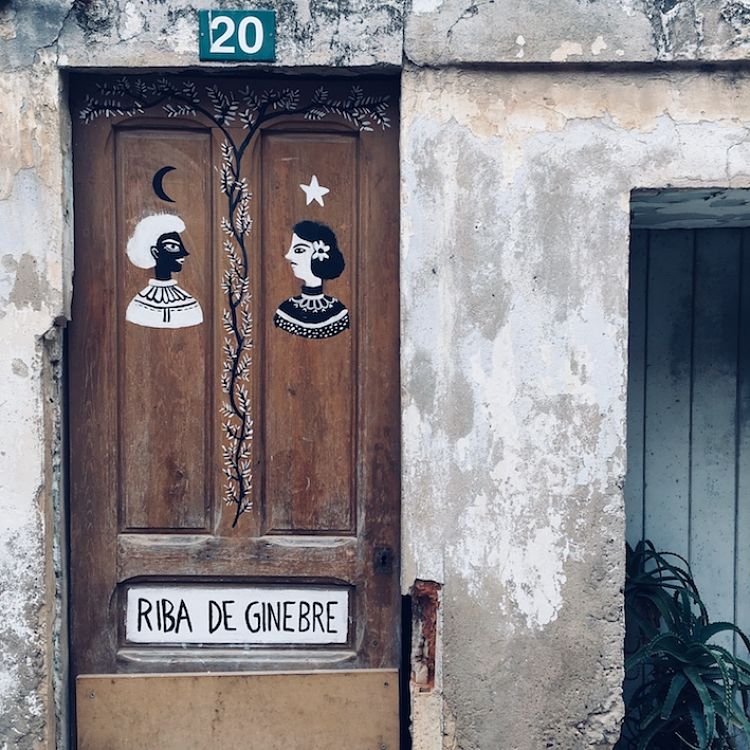
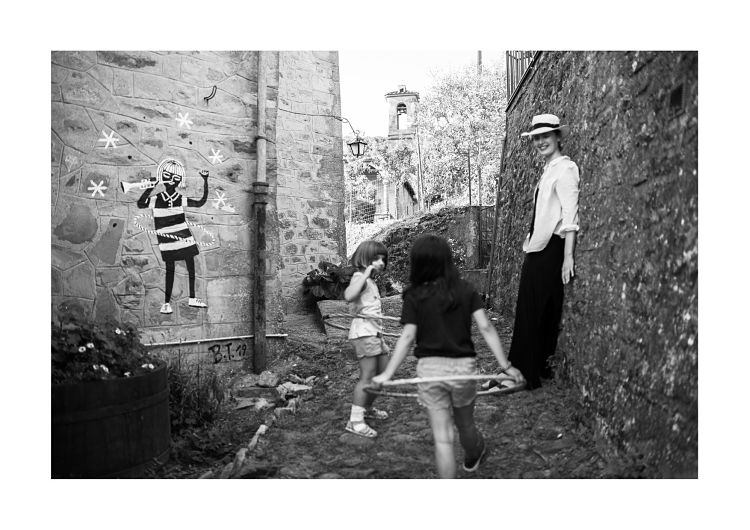
“One of the most beautiful aspects of my work, is the connections I can make through it, and that through my work I can give something back to the places and people who share their lives and stories with me.This circle of sharing and connecting is completed for me when I host my storytelling evenings, where I tell the stories of my sketchbooks and artworks, letting my audience immerse themselves into all of these marvellous worlds that I explored.”
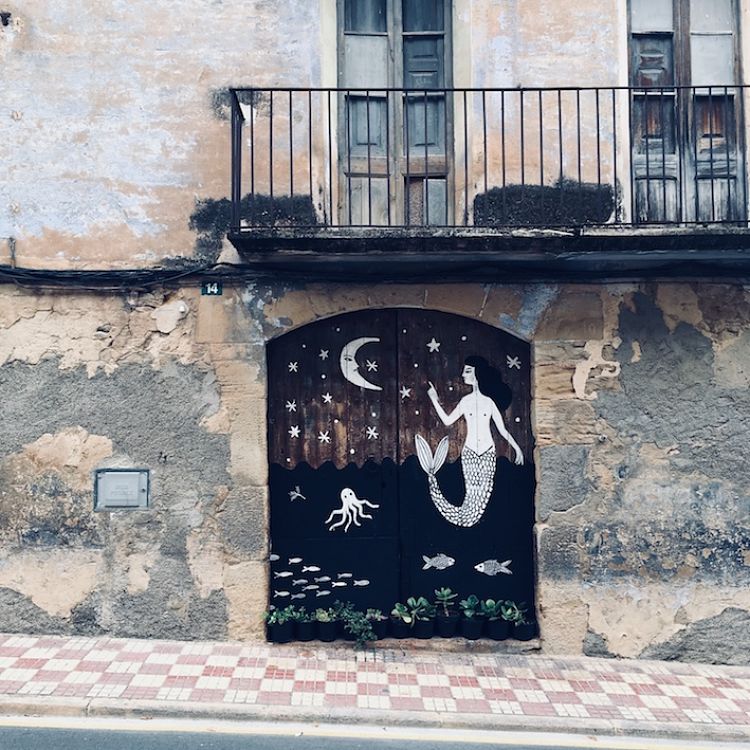
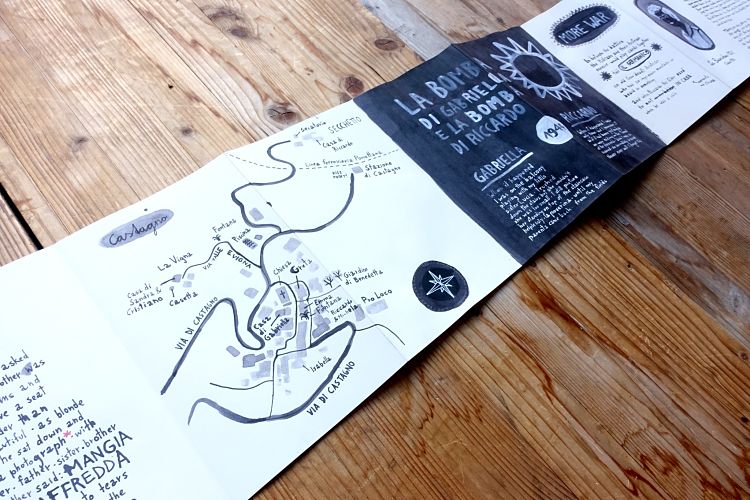 Today, Bianca is grateful to the robber in Marrakech for unleashing the creative force in her; “This incident has taught me that often when something apparently bad happens, you can twist it and around use it as a chance for something really beautiful to be born out of it“. Currently in Austria, Bianca hopes to continue her travels as lockdown eases across the world, materialising otherwise unheard stories through her artworks which are inspired by her first-hand immersion into local cultures.
Today, Bianca is grateful to the robber in Marrakech for unleashing the creative force in her; “This incident has taught me that often when something apparently bad happens, you can twist it and around use it as a chance for something really beautiful to be born out of it“. Currently in Austria, Bianca hopes to continue her travels as lockdown eases across the world, materialising otherwise unheard stories through her artworks which are inspired by her first-hand immersion into local cultures.
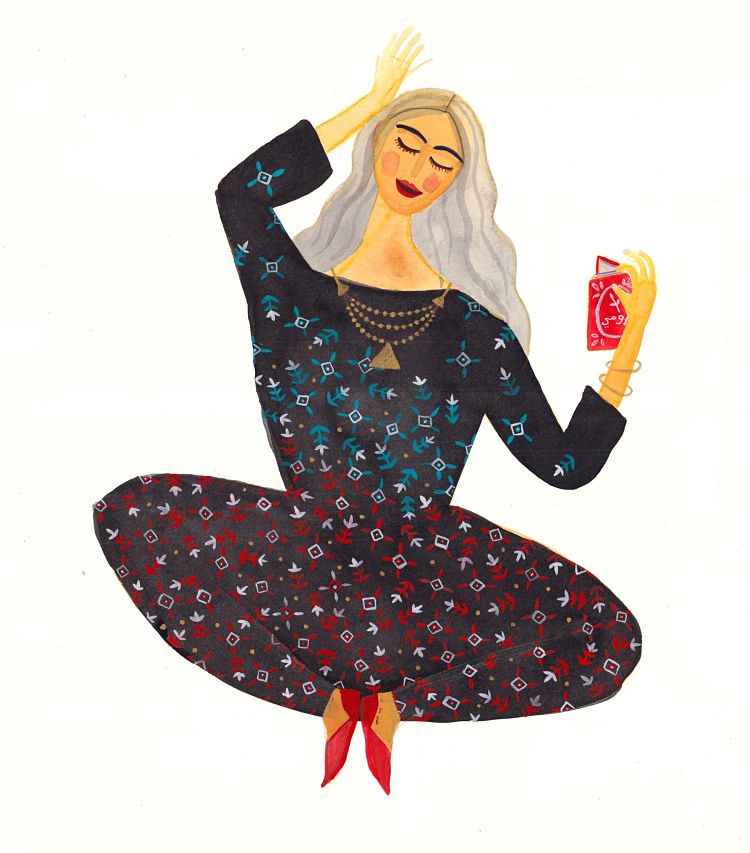
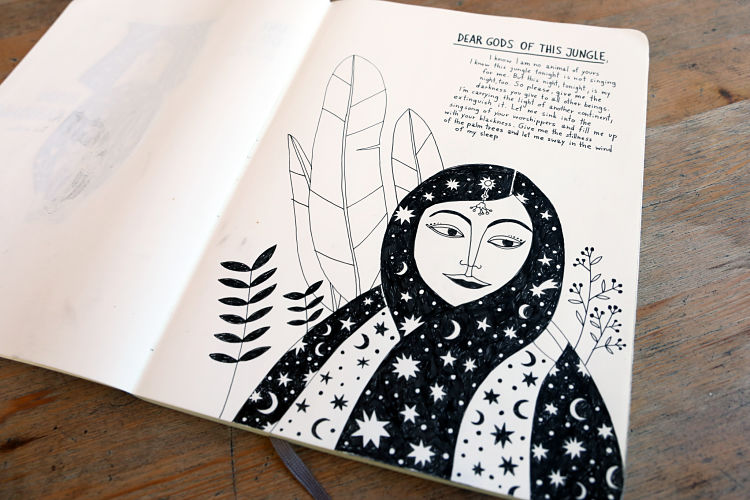
www.biancatschaikner.com
@biancatsh
Want to learn more about becoming a Verified POP Member, like Bianca? APPLY HERE.
- Studio Kars + Boom Present New Collection at Object 2025 - February 15, 2025
- Call for Artists | Scazzamurìdde Artist Residency - February 15, 2025
- Carsten Wagner - February 14, 2025

